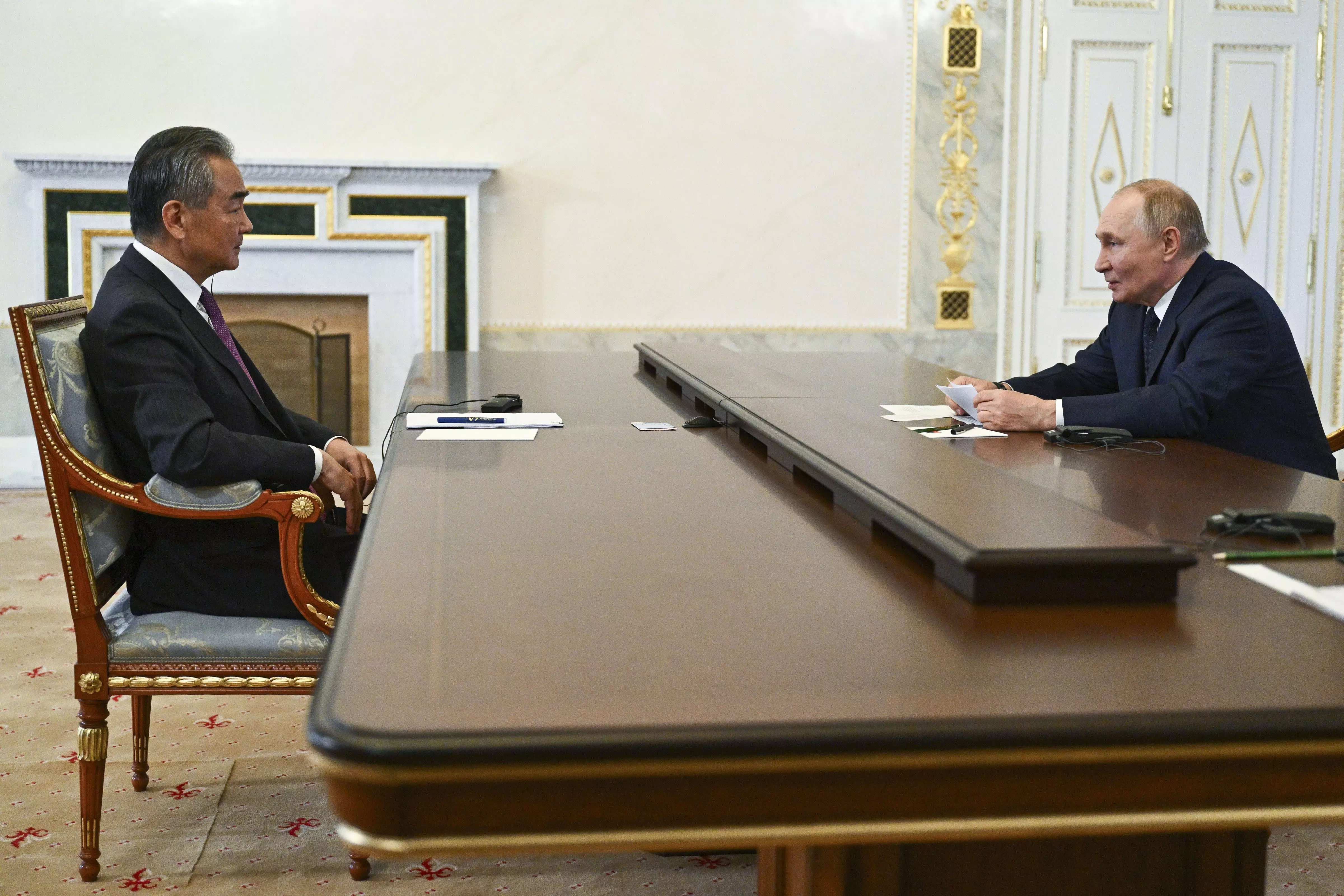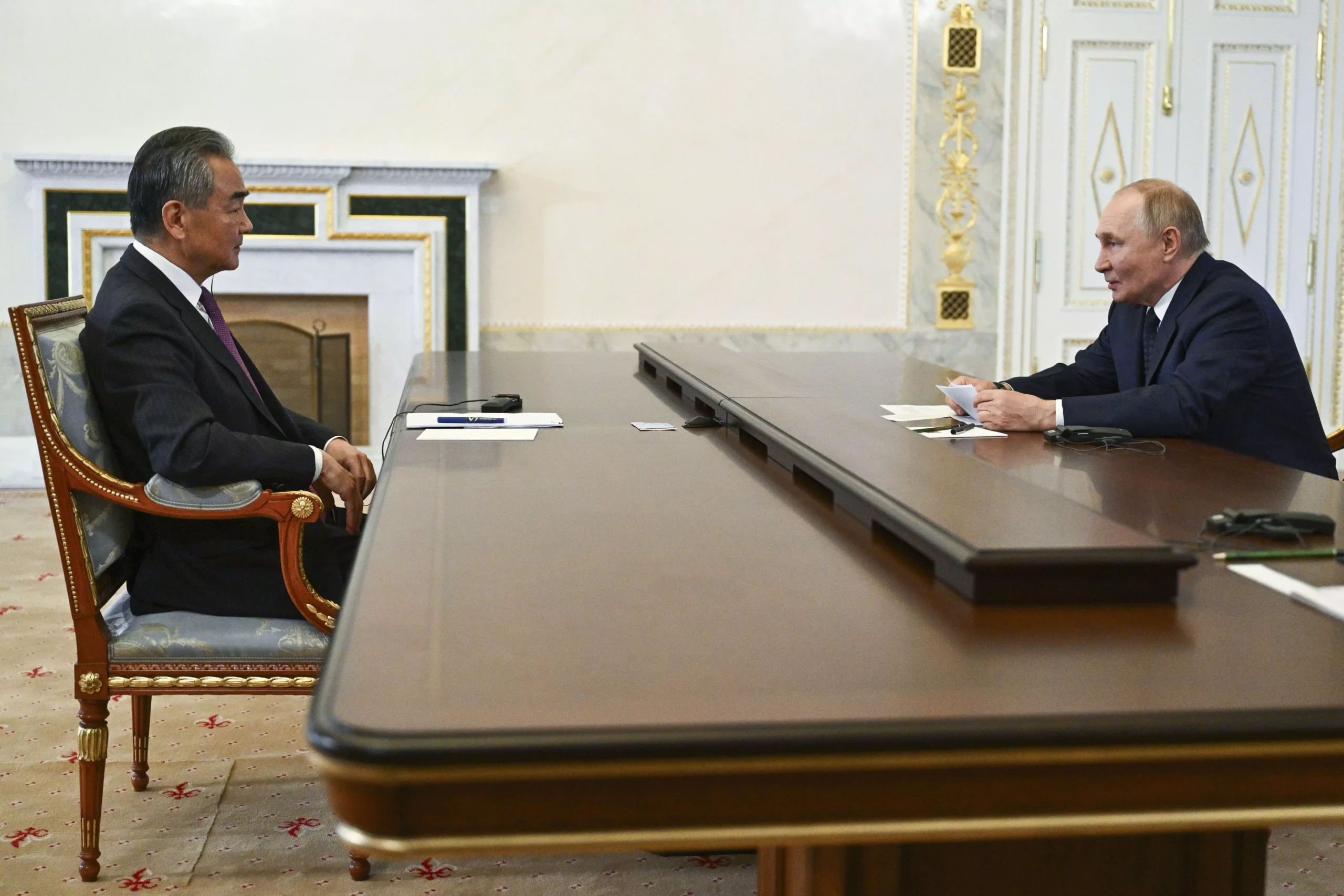
On September 12, 2024, India’s national security adviser Ajit Doval met Wang Yi, a member of the politburo of the CPC central committee and de facto Chinese foreign minister. The encounter took place in St. Petersburg, on the sidelines of a Brics meeting, and a Chinese communiqué says: “The two sides discussed the progress made in the recent consultations on border affairs and believed that the stability of China-India relations is in the fundamental and long-term interests of the two peoples.”
Wang Yi noted that in the face of a world in turmoil, as two ancient Eastern civilizations and emerging developing countries, “China and India should adhere to independence, choose unity and cooperation, and insist on mutual achievement and avoid mutual consumption.” On the disputed Line of Actual Control (LAC), it said: “Both sides agreed to work with urgency and redouble their efforts to realise complete disengagement in the remaining areas.”
This is much easier said than done, for the simple reason that in the first place, China has never admitted to having changed the status quo by advancing into India’s territory in six places in eastern Ladakh in 2020.
Another issue is that the LAC has been moving over the years. The line, which was agreed by Chinese Premier Zhou Enlai in 1956 (and reconfirmed in December 1959) is far from the present Chinese claims.
Recently, India’s external affairs minister S. Jaishankar said that 75 per cent of the disengagement has already been achieved in eastern Ladakh, but the remaining 25 per cent is certainly the most complex, to put it mildly.
As in previous encounters with Indian leaders, Wang Yi tried to argue that India and China are in the same boat and if they work together, the two nations can change the whole world.
However, one should not forget that the systems of governance of India and China are vastly different; in fact, they stand at opposite ends. While India is a democracy with all its good and less good aspects, China is a totalitarian regime with a leader appointed for life.
Some examples show the difference between the two Asian nations. Today’s “disputed” border is with an occupied country, namely Tibet; before 1950, India had no border dispute with its northern neighbour.
Beijing tries to change this basic fact with intense propaganda.
On September 11, the International Campaign for Tibet (ICT), a think tank based in Washington DC, released a report: “China launches new propaganda centre in Lhasa”. It explains that “in the latest escalation of China’s efforts to control the narrative on Tibet, a new propaganda centre called the Tibet International Communication Centre was launched in Lhasa on September 2, 2024.”
The Chinese propaganda would like us to believe that all is well in Tibet, which is not the case. If it was true, why should China stop visitors from coming to Tibet or Tibetans to visit their leader, the Dalai Lama, in India?
In fact, the border discussed by Wang Yi and Ajit Doval is hermetically closed, even the centuries-old trade exchanges between the Indian Himalayas and Tibet have stopped; ditto for for the Kailash-Manasarovar Yatra which is not accessible for Indian devotees.
The first stage of the new propaganda campaign is to replace the name “Tibet” with a Sinicized version “Xizang”, and begin to manifest Chinese President Xi Jinping’s old slogan “tell a good Chinese story on the global stage”.
Tibetan Autonomous Region (TAR) party secretary Wang Junzheng argued that “external propaganda is an important part of the cause of the Party and the country. We must thoroughly implement General Secretary Xi Jinping’s important expositions on external propaganda [and] fully and accurately implement Xi Jinping’s important instructions on Tibet work”. The instructions are that all is fine in Tibet.
One of the tools used by the Chinese propaganda is the Beijing-selected Panchen Lama, the second highest figure in Tibetan Buddhism. The Tibet Daily recently remarked that the lama, whom the Tibetans name as the “fake” Panchen Lama, “carried out a series of Buddhist and social activities in Lhasa, the capital city of southwest China’s Xizang Autonomous Region”.
The “Panchen” gave a talk during which he stressed “the need to firmly uphold the Communist Party of China central committee’s final say on the reincarnation of Living Buddhas of Tibetan Buddhism and voiced strong opposition to secession, while calling for national unity, ethnic unity, and religious and social harmony”. China is already preparing for the Dalai Lama’s succession.
You could ask how this is connected with the border issue between India and China? But forceful propaganda is always linked to a weakness. Remember the Great Leap Forward, during which 30 or 40 million people died of starvation following Mao’s flawed agricultural policies? The years 1958-1961 witnessed more propaganda posters on the bumper harvests in the Middle Kingdom and the happiness of the masses than at any other time.
Propaganda always tries to cover a flaw or a shortcoming.
As Tibetans are today prisoners in their own country, they are shown enjoying Xi’s policies; this is the crucial difference between populations on the Indian and Tibetan sides of the Himalayas. This should be noted by New Delhi.
On September 10, the TAR announced the beginning of the celebrations for the 75th anniversary of the founding of the People’s Republic of China; since the ministry of public security had already designated Year 2024 as “the year of special action to combat and rectify online rumours”, it was decided “to deploy public security organs across the country to carry out a one-year special action”.
The public security organs “have responded quickly and taken the initiative to crack down on Internet-related crimes… making every effort to maintain the order of cyberspace and social security and stability,” observed the Chinese media; quite ominous for an already over-monitored region.
An article mentioned the launch of a “special action”: “…the public security organs of the whole region have cleared more than 13,000 online rumour information, investigated 69 online rumour cases, and shut down 65 illegal and irregular accounts according to law. …More than 650 offline publicity activities have been carried out, and 200,000 people have benefited and participated.”
It concluded that “the public security organs treated both the symptoms and the root causes, supported by special operations, and helped to maintain the security of cyberspace effectively”.
Let us remember that there is one border, but two opposite systems.
It is certainly something that India should use to its full advantage to counter China’s propaganda.
